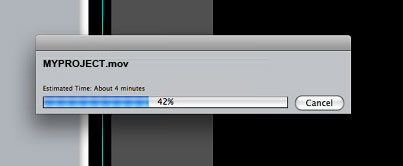This article will not cover the creation of an original media file. Here, we will use Quicktime to create a new media file from an original file, applying our desired transcoding settings in the process.

Exporting HD Spots
Selecting the Export Option
On Quicktime Pro, select File > Export
Pick Format: QuickTime Movie.

Settings Overview
Click Options.
The image below represents our recommended settings. Make sure the checkboxes for Audio (Sound) and Video are checked. Uncheck the option entitled Prepare for Internet Streaming. Next we will go through the preferred Audio and Video settings.

Audio Settings
Click on the “Settings” button within the Audio (Sound) section.
Make the following changes to the audio settings (audio sample size can be set to either 16 or 24) and then click “OK” to return to the image shown on section 3.

Video Compression Settings
Click on the “Settings” button within the Video section.
Make the following changes to the compression settings and then click “OK” to return to the image shown on section 3.

Export Size Settings
Click on the “Size” button within the Video section.
Make the following changes to the settings and then click “OK” to return to the image shown on section 3.


Generate the Final Output
On the “Movie Settings” screen, verify that all settings match the settings on Section 3 and click on “OK.”
Give your final output a name and click “Save.” Final Cut Pro will now generate an H.264 file using the settings specified above.

(Optional) Checking Your File Using Quicktime’s “Movie Inspector”
If you are not sure about the file you just created, it may be a good idea to open it up in Quicktime (Mac or PC) and open the Movie Inspector Window ( Window > Show Movie Inspector ).
As you play your video, the “Normal Size” property should remain at 1920×1080 and the “Movie FPS” property should remain at 29.97. Please take note of all other properties as well, and make sure “Data Rate” (bit rate) remains close to 30 mbits/sec.


Exporting SD Spots
Selecting the Export Option
On Quicktime Pro, select File > Export
Pick Format: QuickTime Movie.
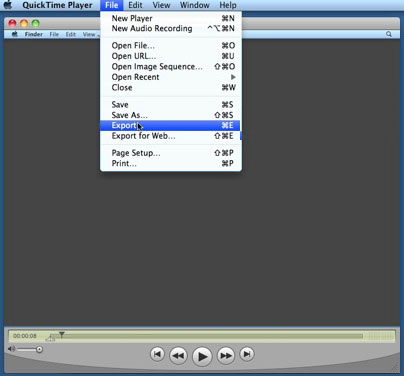
Settings Overview
Click Options.
The image below represents our recommended settings. Make sure the checkboxes for Audio (Sound) and Video are checked. Uncheck the option entitled Prepare for Internet Streaming. Next we will go through the preferred Audio and Video settings.

Audio Settings
Click on the “Settings” button within the Audio (Sound) section.
Make the following changes to the audio settings (audio sample size can be set to either 16 or 24) and then click “OK” to return to the image shown on section 3.
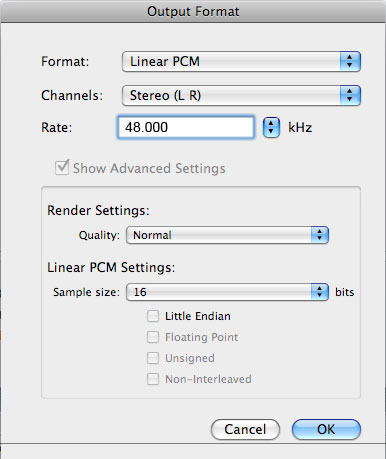
Video Compression Settings
Click on the “Settings” button within the Video section.
Make the following changes to the compression settings and then click “OK” to return to the image shown on section 3.
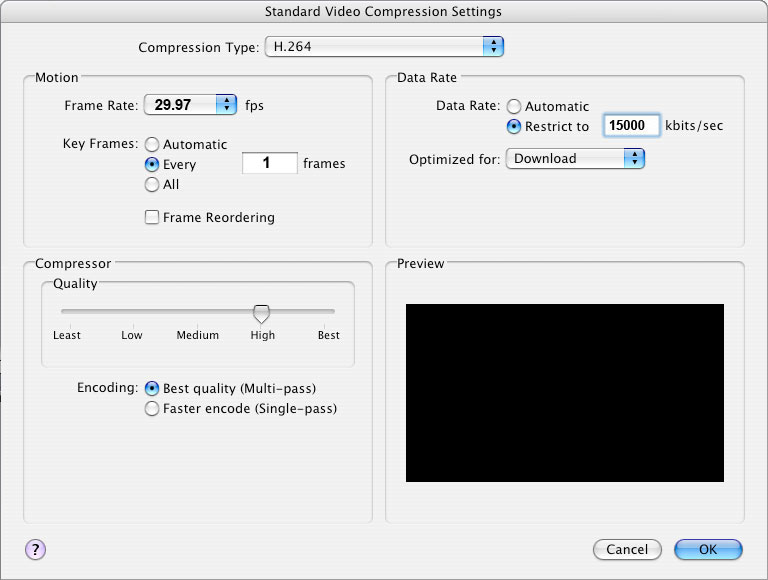
Export Size Settings
Click on the “Size” button within the Video section.
Make the following changes to the settings and then click “OK” to return to the image shown on section 3.
Tip: If you included interlaced clips in this project, you probably want to select the “Deinterlace” option since you are about to generate a progressive output.
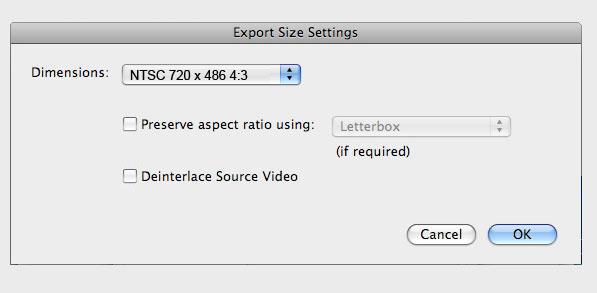
Generate the Final Output
On the “Movie Settings” screen, verify that all settings match the settings on Section 3 and click on “OK.”
Give your final output a name and click “Save.” Final Cut Pro will now generate an H.264 file using the settings specified above.
